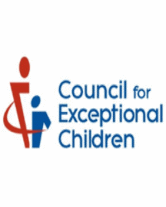Increasing Attention
Many children with learning disabilities, including crossover children, are unableto sustain attention appropriately. Attention has threemajor roles in the learning process:
- It allows us to focus on a particular problem for an extended period.
- It helps us retrieve inactive memory elements when they are needed for current problem solving.
- It allows us to shift the focus and content of our attention when it isrequired.
The inability to maintain sufficient control over these three attentionprocesses is the essence of attention deficit.
The Diagnostic and Statistical Manual of the American Psychiatric Association lists the followingcharacteristics of ADHD. Children may be diagnosed as inattentive, as hyperactive-impulsive, or as a combination of both. Children must exhibit six or more of the criteria for more thana six-month period.
- Failure to pay close attention to details; careless mistakes in schoolwork.
- Difficulty sustaining attention while working or playing.
- Does not listen even when spoken to directly.
- Does not follow instructions or complete assigned tasks.
- Has difficulty organizing tasks and activities.
- Avoids or dislikes tasks requiring sustained mental effort.
- Often loses materials and books.
- Is easily distracted by extraneous stimuli.
- Is often forgetful in daily activities.
- Fidgets with hands or feet or squirms in seat.
- May leave seat in classroom when it is inappropriate.
- May run or climb excessively or in inappropriate situations.
- May have difficulty in playing quietly.
- Is often "on the go."
- Often talks excessively.
- Blurts out answers before questions have been completed.
- Has difficulty awaiting turn.
- Interrupts or intrudes on others.
One has only to observe a child with ADHD for a few minutes in a classroom beforeit becomes obvious that the setting makes it difficult for the child to stay on task. The following are helpful strategies to assist an inattentive, hyperactive, or impulsive student:
- Use carrels or individualworkplaces. When the use of the "office" is handled appropriately, it can become rewarding ratherthan punishing.
- Use a secret sign between teacher and child to signal that the child should consider moving to the carrel. The development of an "It's our secretway to help you" system will reinforce the positive aspects of the experience.
- Allow the child to walk toa designated spot, stretch to "get the kinks out," and return to working at his orher seat. This "movement" corner can be a small space designated by a pieceof carpet or by tape on the floor.







